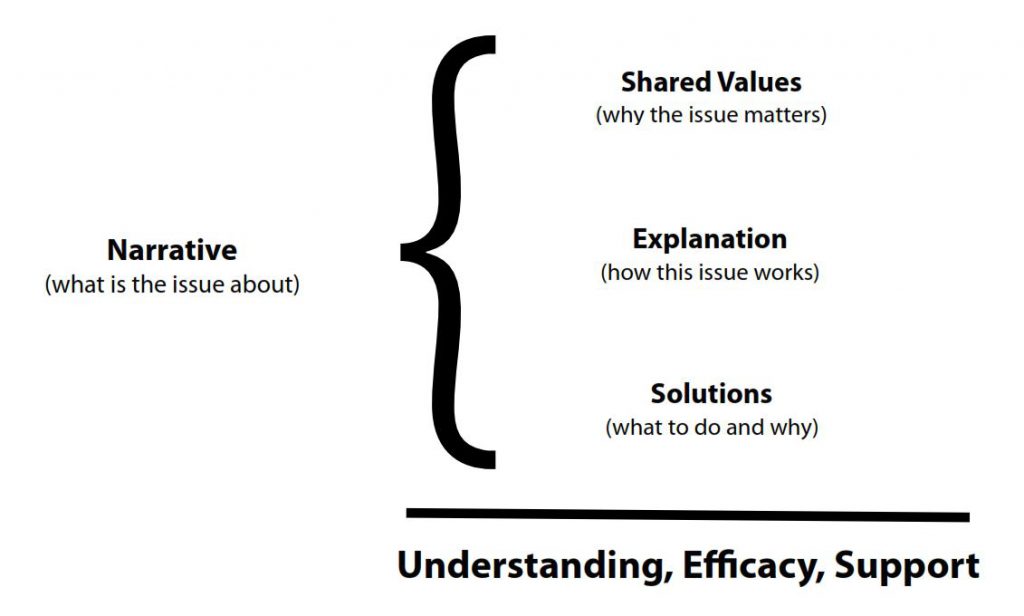The data on immigration and our economy is impressive. Although immigrants only make up 13 percent of the population, they constitute 17 percent of our labor force, and their share of contributions to America’s GDP is 16 percent. Are these facts enough to change minds? The research says no.
In our latest webinar on February 1, 2018, Making Facts Matter: Immigrants, the Economy and Words that Work, Marisa Gerstein Pineau from the FrameWorks Institute argued that we should never assume that “data speaks for itself.” If the facts are presented alone, then there is a chance an intended message will get lost or completely reinterpreted. For example, although one person may read the above statistics and glean that immigrants contribute to our economy in outsized proportions compared to their numbers, someone else may interpret that immigrants displace U.S.-born workers.
One way to ensure our preferred narratives get across is through storytelling. When we share stories, we naturally talk about shared values, we give intuitive explanations of how things work and we may even offer solutions based on the case we’ve described. This way of discussing immigration can create understanding, support and a sense in the listener that solutions are achievable, which is a powerful trifecta that helps to change minds.

The potential of storytelling has not passed by the immigrant community; there are many organizations solely committed to sharing immigrants’ experiences, and social media is replete with stories in a variety of formats. But what are the best practices for storytelling?
The most common pitfall is focusing a story on just one person. These stories often exist to create empathy and even pity, but these emotions are rarely effective. FrameWorks’ research shows people empathize with only one person at a time and don’t tend to extend those feelings toward entire groups facing the same conditions.The focus of a pro-immigrant narrative should be to show why a whole group deserves to stay in America not just one individual.
One way to ensure you don’t fall into the trap of individualism is to make a place the protagonist of your story. In many areas of the United States, there are towns or neighborhoods to which you can point that were suffering from low population rates and empty storefronts until immigrants moved in and helped revitalize the area. Stories like this are great for providing relatable and accessible context to the masses of data available on immigrant contributions to revitalization, and some of the most successful examples don’t even present the immigrants at all.
Lastly, appealing to American values about shared prosperity, human dignity and hardworking families is proven to work, as is ending your story with a pragmatic offering such as “we need better policies to make sure our economy stays strong. One thing we could do is offer permanent work authorization to DREAMers.” If all else fails, make sure that values, explanations and solutions are the anchors of your narrative.
Sources:
- David Dyssegaard Kallick, “How Immigrants Benefits All Americans” Webinar lecture Making Facts Matter: Immigrants, the Economy and Words that Work, 2018.
- Marisa Gerstein Pineau, “Narratives that Reshape the Immigration Conversation” Webinar lecture Making Facts Matter: Immigrants, the Economy and Words that Work, 2018.
